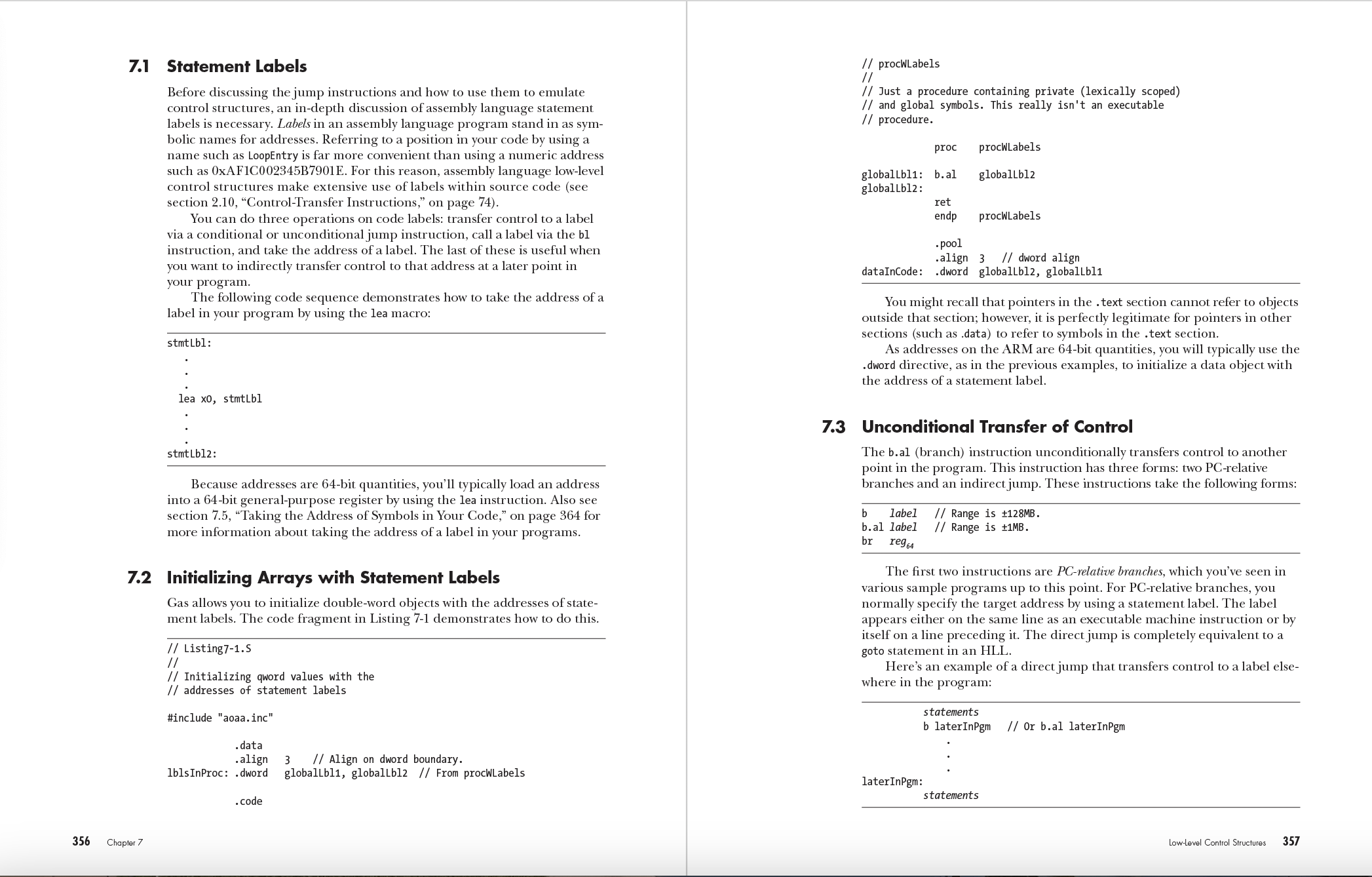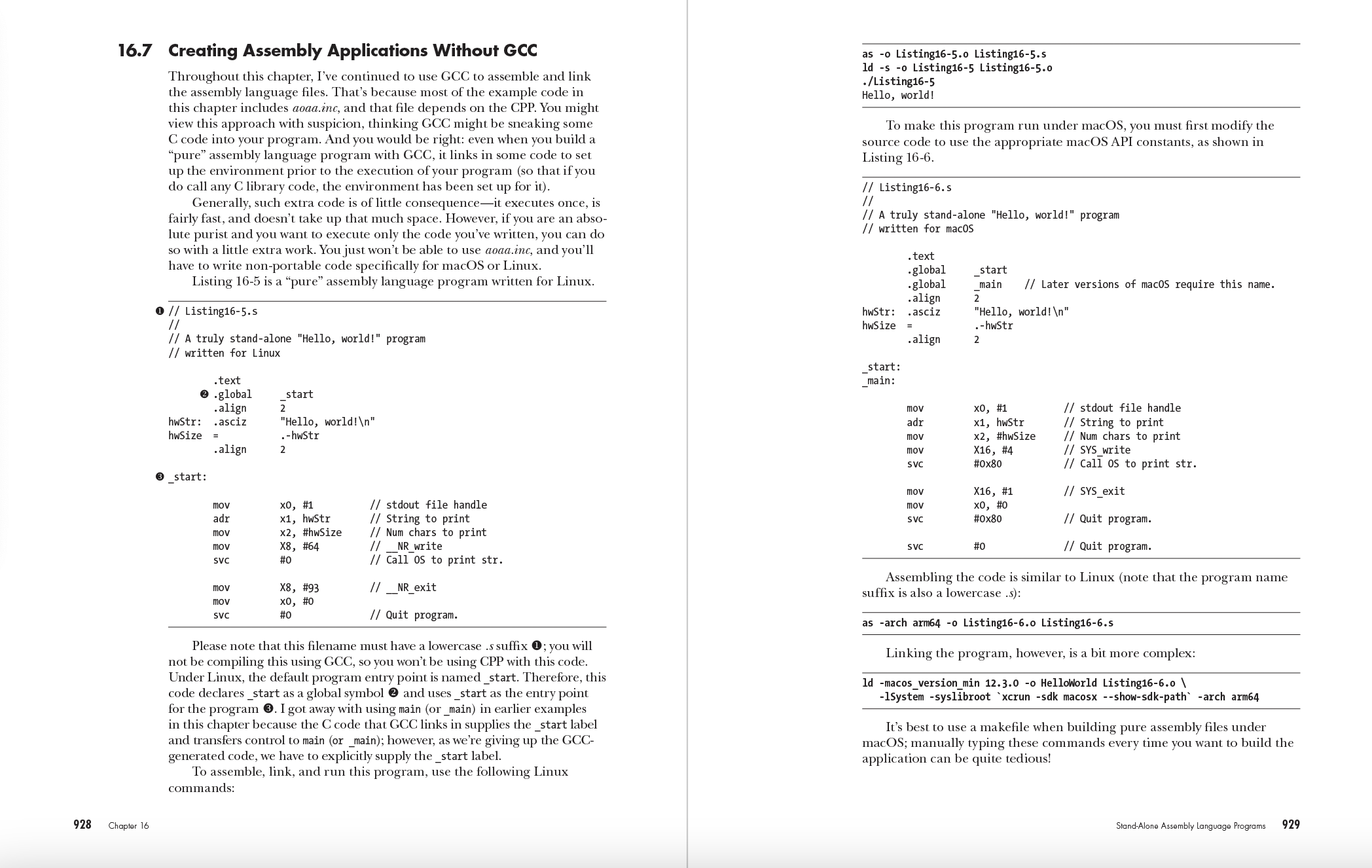Introduction
PART I: MACHINE ORGANIZATION
Chapter 1: Hello, World of Assembly Language
Chapter 2: Data Representation and Operations
Chapter 3: Memory Access and Organization
Chapter 4: Constants, Variables, and Data Types
PART II: ASSEMBLY LANGUAGE PROGRAMMING
Chapter 5: Procedures
Chapter 6: Arithmetic
Chapter 7: Low-Level Control Structures
Chapter 8: 12-Bit Manipulation
Chapter 9: Numeric Conversion
Chapter 10: Table Lookups
Chapter 11: SIMD/Neon Programming
Chapter 12: Bit Manipulation
Chapter 13: Macros and Gas-Compile Time Language
Chapter 14: String Operations
Chapter 15: Managing Complex Projects
Chapter 16: Standalone Assembly Programs
PART III: REFERENCE MATERIAL
Appendix A: ASCII Character Set
Appendix B: Glossary
Appendix C: The BASH Shell Interpreter
Appendix D: Some Useful C Language Features
Appendix E: Answers to Questions
View the Copyright page
View the detailed Table of Contents
View the Index





